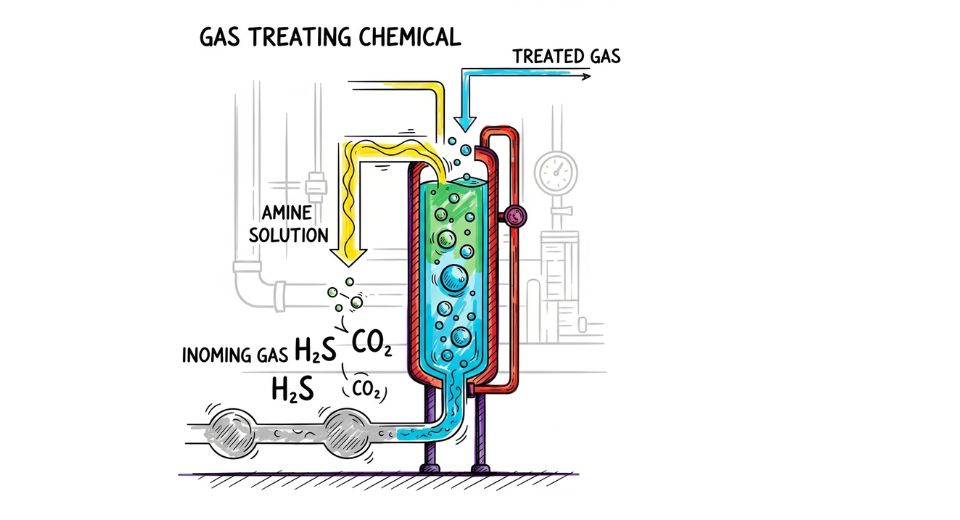
Aug 04, 2025

A new report by Metastat Insight has shed a spotlight on the Gas Treating Chemicals Market, presenting an in-depth tale that delves far deeper than simple surface knowledge. This somewhat unsung industry is picking up steam for a reason. With a world where energy needs are urgent and environmental responsibilities continue to grow, the forces at play with gas treatment chemicals say a lot about larger industrial processes and strategic shifts.
Beneath the surface of this market lies the quiet but essential role it plays at the heart of the gas processing supply chain. These chemical products are not splashy features, but they are crucial to the operation. What is apparent through the report is the increased use of advanced formulations to serve as cleaning agents for natural gas streams, eliminating impurities which would otherwise damage hardware or fail testing. These treatments tend to attack unwanted components like hydrogen sulphide and carbon dioxide, both of which are notorious for their corrosive and environmentally hazardous nature.
One striking change emphasized in the study is the growing degree of specificity with which treatments are being customized. Broad-spectrum, generic treatments are being replaced by more targeted mixtures designed to react to site-specific conditions. This trend points toward a trend toward precision, driven by economic necessity as well as environmental concern. As businesses strive to reduce chemical use while extracting the utmost efficiency, the need for specialized formulations increases. Notably, the Gas Treating Chemicals Market is also experiencing a realignment of influence over geography.
Some regions have traditionally been strongholds of gas production, but newer areas are becoming hotspots of demand and innovation. This shift does not happen in a vacuum. It is driven by regional regulatory systems, investments in infrastructure, and strategic alliances that realign how and where gas treatment is being carried out. As newer markets start to unfold the operational capacity, the spillover is evident in the nature of chemicals that are being manufactured and the companies that are spearheading the drive. Another thread that cuts across the Metastat Insight reporting is the way operational priorities are transforming procurement and usage behaviours. Budget pressures, combined with greater regulation, are compelling stakeholders to rethink not only what they consume, but how they procure and utilize it.
Efficiency is no longer a nicety, but an operational necessity. Suppliers in the Gas Treating Chemicals Market are fighting back with more nimble supply models, flexible packaging solutions, and in some instances, on-site assistance that assists operators in optimizing use in real time. In addition, sustainability factors are quietly changing the chemistry itself. While not always apparent to the naked eye, there's a discernible drift toward minimizing the environmental impact of treatment agents. Whether this is biodegradable carriers or fewer volatile organic compounds, the result is a quiet revolution in formulation science.
The quest is not only to satisfy current expectations but also to prepare products to meet tomorrow's expected standards. Technology, in the widest possible sense, is also coming into play. Remote monitoring technology, digital modeling software, and predictive maintenance platforms are joining up with chemical use in novel but significant ways. Data is being used by operators more and more to predict not only mechanical degradation but chemical behaviour.
This synergy allows for better dosing, lower wastage, and better long-term results. As identified in the report, this degree of integration is a break from conventional, reactive techniques and creates the door for a better-coordinated approach to treating gas. One should not ignore the human factor either. The industry's movement towards more specialized and green practice has put a high value on expertise. Field workers, laboratory chemists, and process engineers are working together in ways they did not during previous eras. This cooperative culture is driving innovation in what is being created as well as how issues are framed and addressed.
Information-sharing among regions and firms is slowly dismantling the long-standing silos that characterized this industry. What particularly stands out in the Metastat Insight report is not just the width of its insights, but the depth of background it offers. The Gas Treating Chemicals Market, in its developing chemistry, logistics synergies, and technological convergences, presents a telling window into the ways industries adapt to constraint and opportunity.
It is not merely treating gas; it is about redesigning the way we deal with resources that are as economically important as they are politically charged. To go full circle, the report by Metastat Insight highlights a market that will not scream to be heard, but undoubtedly demands respect through its unassuming evolution. The Gas Treating Chemicals Market, influenced by various forces from shifts in regional policy to breakthroughs in material science, is charting a course that indicates anything but reactive expansion. It manifests a considered and researched response to international challenges, navigating a path forward that interweaves technical discipline with strategic vision.
Drop us an email at:
Call us on:
+1 214 613 5758
+91 73850 57479